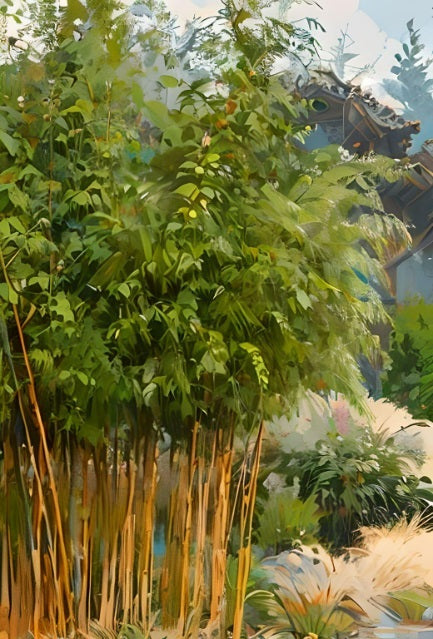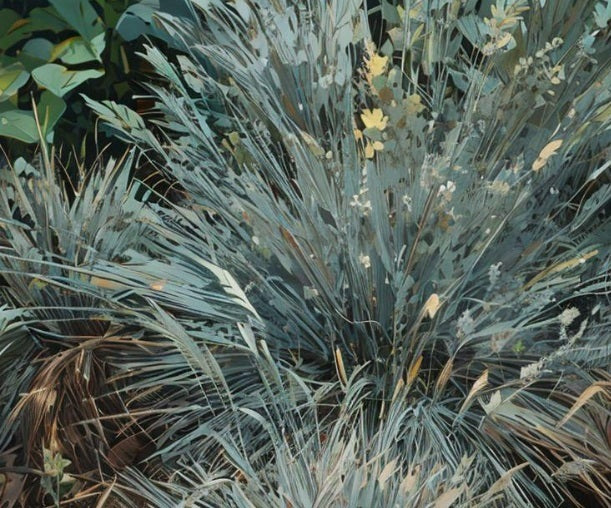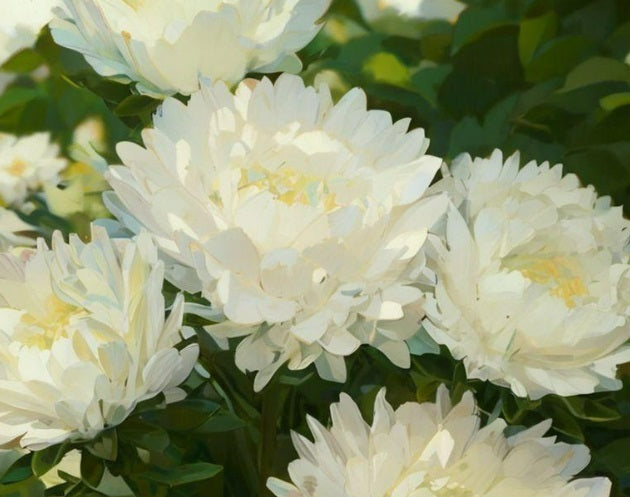When to Germinate Bamboo Seeds
Bamboo seeds can be germinated any time of the year in consistently controlled indoor environments. Subsequently, even those living in the northern latitudes can germinate their bamboo seeds during the colder Fall and Winter months for optimal seedling growth and development indoors, and healthy young bamboo plants ready for planting outdoors in Spring.
Germinating Bamboo Seeds in Northern Zones
For those living in colder northern climates up to and including Zone 9, where outdoor temperatures during the cold months may fall below freezing, any time of year is an optimal time to germinate bamboo seeds indoors.
We germinate bamboo seeds year round, and plant the young plants outdoors between late April (after our final freeze) and November (before the first freeze). There are a few months of the year when we are maintaining young plants indoors for a somewhat longer period of time while we await Spring planting. We have yet to identify any downside to having beautiful little 'boos glowing up our indoor spaces during the notorious Pacific Northwest gray and dreary months.
If your goal is to have young bamboo plants in the ground by late Spring, then germinating your seeds before February gives you ample time to nurture your seedlings indoors until outdoor conditions are risk-free.
When your plan is planting bamboo outdoors during the warmest months June through September, give yourself about 4-5 months for seed germination and for your young bamboo plants to achieve sufficient height for planting out of doors.
When using containers and planters, you can usually shorten the time between seed germination and placement outdoors when you position your containers for sun exposure appropriate for the variety, while ensuring that young plants aren't over-exposed to excessive mid-day sun. Be attentive also to exposure to hot summer winds and the need for sufficient protective watering.
Indoor bamboo seed germination during the colder seasons works particularly well for most temperate regions in North America, Europe, and corresponding latitudes in the Northern Hemisphere with distinctive cold seasons when temperatures may drop below freezing.
Bamboo that is germinated from seed indoors during Fall and Winter months can be ready to plant outdoors by the following Spring, and in many locations as early as April. Young bamboo plants can be transplanted from their starter pots to a permanent location in the garden landscape when they are about 12-18” tall, and when there is no danger of extended frost or freeze.
Most young bamboo attain this height by their 4th or 5th month. Germinating your bamboo seeds in Fall and Winter ensures you’ll have a head start on incrementally conditioning and hardening your young bamboo plants with some time out of doors in preparation for Spring planting when they are no longer at risk of a prolonged frost/freeze.
Typical Timeline from Germination to Landscape
Weeks 1-2 : Seed germination
Weeks 3-8 : Seedling development; primary leaves emerge; height 2-6"; transferred to potting soil mix in seedling pot/cup.
Weeks 9-12 : Secondary culms emerge; height 6-8"; transplanted to potting soil mix in1/2 gallon pot.
Weeks 13-16 : Height 9-12"
Weeks 17-20 : Continued plant/root growth and development; height 13-18". Some bamboo ready to incrementally harden and plant outdoors after all threat of extended frost/freeze.
Weeks 20+ : Additional bamboo ready for planting outdoors. Height 20"+.
Germinated Indoors ---> Planted in the Ground Outdoors
January ---> May
February ---> June
March ---> July
April ---> August
May ---> September
June ---> October
July ---> November or April
August ---> April
Sept ---> April
October ---> April
November ---> April
December ---> April
These timeframes can be shortened when planting in more protected containers, planters, pots, and the like.
Undertaking cold hardy bamboo seed germination in Fall and Winter allows you to take advantage of your regional plant zone, seasonal temperatures, and environmental conditions, and coordinate those factors with the growth rate, traits, and characteristics of your bamboo seedlings. Fall/Winter indoor bamboo seed germination with outdoor planting in Spring makes it possible for you to seamlessly grow and transition your bamboo from emerging seedlings to your outdoor landscape within a matter of months.
While many young bamboo plants will be ready for permanent planting outdoors by their 4th or 5th month, some Fargesia bamboo seeds and Borinda seeds may be somewhat slower to germinate so they might require some additional time overall to achieve transplant readiness. On the other hand, many of the Fargesia are very cold hardy, and they can often be incrementally hardened and planted out of doors in early Spring temperatures a little sooner than more temperate varieties.
While tending your bamboo seedlings indoors, situate your seedlings near a window with southern exposure to maximize available light from the sun that is lower on the horizon. This is especially helpful if you live in a northern region that is often overcast during the colder seasons. If your seedlings start to appear weedy or spindly, with underdeveloped leaves, it's likely due to insufficient full spectrum light. In deficient light, seedlings will expend their available energy to accelerate vertical growth in an attempt to access more available light. Using a broad spectrum grow light will ensure that your seedlings and young plants receive enough UV light in Winter to support sufficient photosynthesis and consistent, balanced growth of roots, stems, and leaves until it's time to plant them outdoors.
Please refer to Germinating Bamboo Seeds in our Resource Library for our recommended germination process and instructions.
Bamboo Seed Germination in Sub-tropical and Tropical Zones
All of the fortunate gardeners enjoying year ‘round growing conditions closer to the Equator and in the Southern Hemisphere can also germinate bamboo seeds at any time of the year indoors, and even outdoors when 24-hour average temperatures are conducive to germination. Our southern Mediterranean, subtropical and tropical gardeners also enjoy the advantages of extended planting seasons, facilitating convenient year-round bamboo seed germination.
Because there is minimal risk of damaging frost or freeze, and overnight temperatures typically remain moderate, there is typically little need for hardening young bamboo plants to withstand extended cold temperature lows during what is considered the cooler seasons.
However, gardeners in the more southern latitudes and in typically hot, arid regions should incrementally expose young nursery/indoor plants to the more intense sunlight and higher temps.
During the initial germination phase, the first set of seed leaves (cotelydons) are not capable of photosynthesis, and they have no natural protection from damaging UV rays. Do not expose newly germinated seedlings to intense direct sunlight. Once the seedlings have produced their secondary true leaves which are able to photosynthesize, you can begin incrementally exposing the seedlings to sunlight, but always keep it filtered during the more intense mid-day hours.
Always protect young seedlings, even those considered tropical varieties, from intense midday sun, and water young bamboo plants daily when daytime temps are high. Be especially watchful for dual exposure to high temperatures and wind, which can quickly stress any young plant. Monitor the potential for reflected or retained heat from adjacent surfaces, and relocate young plants that show any signs of heat stress.
Please refer to Germinating Bamboo Seeds in our Resource Library for our recommended germination process and guidelines.
Collections
-

All Bamboo Seeds for Sale
Welcome to our catalog of bamboo plant seeds for sale including clumping...
-

All Ornamental Grass Seeds
Grass has finally come into its own as a garden landscape centerpiece....
-

All Flower Seeds
Thoughtfully curated flowers, plants and bushes that beautifully complement your bamboo garden...



